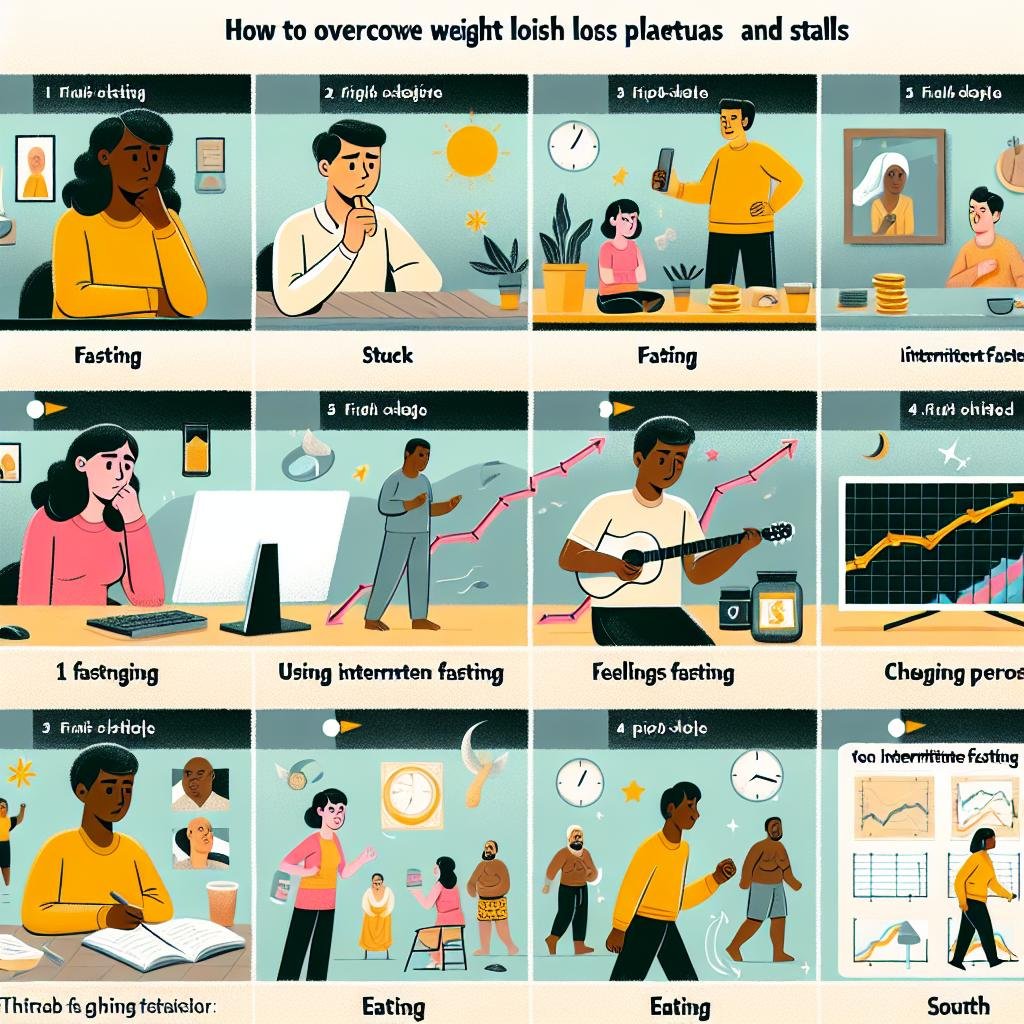Title: Breaking Through: How to Overcome Plateaus and Stalls in Weight Loss with Intermittent Fasting
In the journey of weight loss, many encounter a formidable enemy: the plateau. After weeks, or even months, of steady progress, the scale seems to betray your efforts, stubbornly refusing to budge. This frustrating moment can feel like a cruel twist in a tale of healthy living, often leaving individuals disheartened and questioning their chosen path. But what if there was a way to turn this stagnation into motivation? Enter intermittent fasting—a flexible and scientifically supported eating strategy that not only champions mindful eating but may also hold the key to reigniting your weight loss journey. In this article, we’ll explore effective strategies to break through those daunting stalls, empowering you to adapt, refine, and transform your approach with intermittent fasting. Whether you’re a seasoned practitioner or just starting out, discover how to outsmart plateaus and reclaim your path to wellness.
Navigating the Weight Loss Plateau with Intermittent Fasting
Experiencing a weight loss plateau can be frustrating, especially when you’re committed to your intermittent fasting routine. When the scale refuses to budge, it’s essential to analyze your approach and make thoughtful adjustments. Here are some strategies to consider:
- Reassess Your Eating Window: Experiment with different fasting schedules. If you’ve been sticking to a 16/8 plan, try changing it to 18/6 or even a 20/4 to reset your body’s metabolic state.
- Increase Protein Intake: Boosting your protein consumption can help curtail cravings and enhance satiety, potentially influencing your body’s ability to shed those stubborn pounds.
- Incorporate Strength Training: While cardio is vital for heart health, don’t underestimate the power of building muscle. Incorporating strength exercises can aid in increasing your basal metabolic rate.
Additionally, tracking your macronutrients can provide insights into your overall dietary balance. A food diary can help shed light on any hidden sources of calories you may overlook. Consider the following for your progress:
| Tip | Benefit |
|---|---|
| Drink More Water | Helps with satiety and reduces hunger pangs. |
| Prioritize Sleep | Recovers the body and regulates hunger hormones. |
| Mindful Eating | Promotes awareness of food choices and portion sizes. |

Understanding the Science Behind Stalls and How to Combat Them
To truly grasp the phenomenon of weight loss stalls, it’s essential to understand the mechanics of the human body. Each individual’s metabolism is unique, influenced by a multitude of factors such as age, gender, genetics, and lifestyle choices. When you consistently follow a calorie deficit through intermittent fasting, your body might initially respond with noticeable weight loss. However, as your muscles adapt to lower energy intake, your metabolic rate may slow down, triggering a plateau. This is a natural response as your body aims to preserve energy during periods of restricted food intake. The transition to a stable phase can invoke frustration, but recognizing that your body is simply trying to achieve equilibrium is the first step to overcoming it.
Combatting these stalls requires a multi-faceted approach that re-engages your metabolism. Here are some effective strategies:
- Vary your fasting schedule: Altering your fasting windows can stimulate metabolic flexibility.
- Incorporate strength training: Building muscle boosts your resting metabolic rate.
- Monitor macronutrient intake: Adjusting protein, fats, and carbohydrates can reinvigorate your progress.
- Stay hydrated: Adequate water intake aids digestion and can prevent misinterpretation of hunger signals.
Utilizing a simple food journal can also aid in identifying patterns or areas to adjust. Below is a sample table to help track daily fasting and eating habits:
| Day | Fasting Window | Meals | Exercise |
|---|---|---|---|
| Monday | 16:8 | 2 | Strength Training |
| Tuesday | 18:6 | 1 | Cardio |
| Wednesday | 20:4 | 1 | Rest |

Practical Strategies to Reignite Your Weight Loss Journey
Getting back on track after a weight loss plateau can be daunting, but there are effective strategies to reignite your progress. Start by adjusting your eating window when practicing intermittent fasting. If you’ve been consistently using a 16:8 format, consider switching to a 18:6 or even a 20:4 approach for a short period. This subtle modification can help stimulate your metabolism and encourage weight loss by creating a bigger caloric deficit. Additionally, incorporate high-intensity interval training (HIIT) a few times a week. This not only boosts calorie burn during the workout but continues to elevate your metabolism long after you finish.
Another valuable adjustment is to track your food intake more diligently. Many individuals underestimate their calorie consumption, so utilizing a food diary or an app can bring clarity and accountability. Furthermore, focus on the quality of your meals by emphasizing whole foods over processed options. Include plenty of fiber-rich fruits and vegetables, lean proteins, and healthy fats to promote satiety. Experimenting with different food combinations or preparations can also be refreshing and keep your meals exciting. Remember, staying hydrated is equally important; aim for an adequate water intake, which can enhance metabolic function and help in managing hunger cues.

Embracing Flexibility in Your Fasting Routine for Sustainable Results
One of the most significant advantages of intermittent fasting is the ability to adapt your routine to fit your lifestyle and needs. Embracing flexibility can lead to sustainable weight loss results, allowing you to tailor your fasting schedule and methods according to your personal situation. Here are some effective ways to incorporate flexibility into your fasting regimen:
- Adjust Your Eating Window: Feel free to shift your eating hours depending on social events or work commitments.
- Experiment with Fasting Periods: Try different fasting windows, such as 16:8 or 5:2, to see what resonates best with your body.
- Listen to Your Body: Pay attention to how you feel; don’t hesitate to break fast early if you’re overly fatigued or hungry.
Additionally, maintaining a balanced approach can mitigate the frustration that often accompanies plateaus. Here’s a simple strategy you can implement to maintain momentum:
| Action | Benefit |
|---|---|
| Vary Your Meals | Prevents monotony and boosts nutrient intake. |
| Engage in Light Exercise | Enhances metabolism without causing stress. |
| Set New Goals | Fosters motivation and provides a clear path forward. |
In Summary
overcoming plateaus and stalls in weight loss can feel like an uphill battle, but with intermittent fasting as your ally, you have the power to reignite your progress. By understanding the science behind your body’s adaptations, experimenting with different fasting protocols, and nurturing a mindset of patience and resilience, you can break through barriers that once seemed insurmountable. Remember, every journey has its twists and turns, and weight loss is no exception. Embrace the process, stay committed to your goals, and don’t hesitate to tweak your approach as needed. As you navigate this path, let intermittent fasting not just be a diet, but a transformative lifestyle that empowers you to achieve your health aspirations. Your next breakthrough could be just a fast away. So, take a deep breath, trust the journey, and keep moving forward—you’re one step closer to unlocking your true potential.

